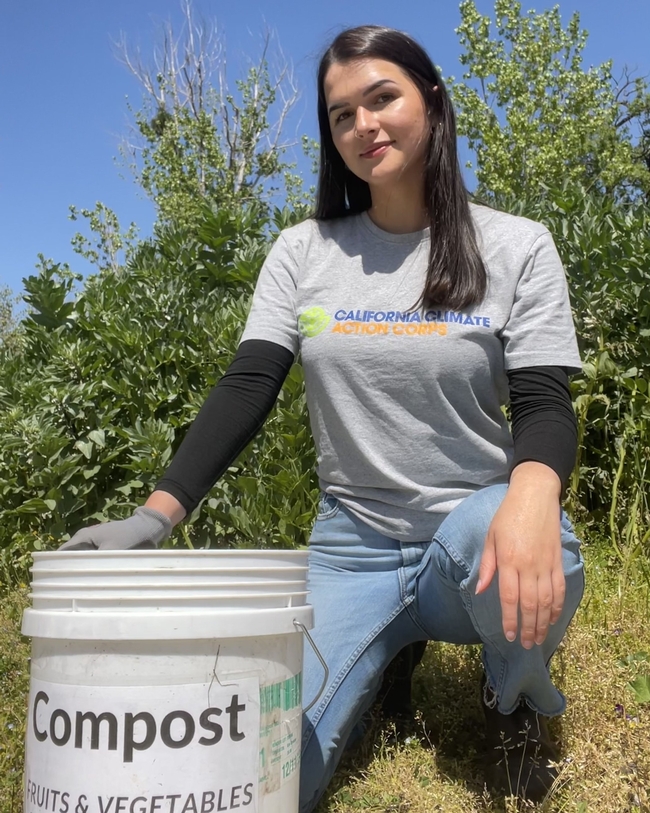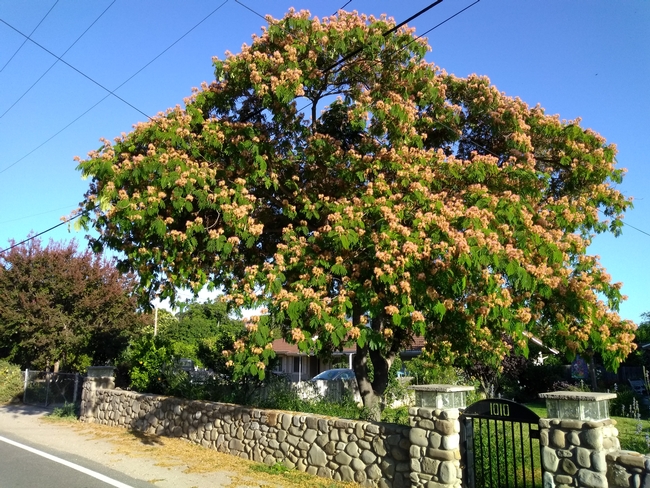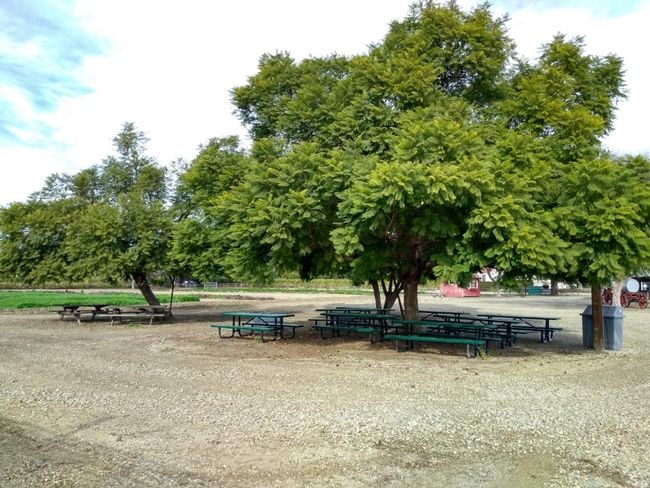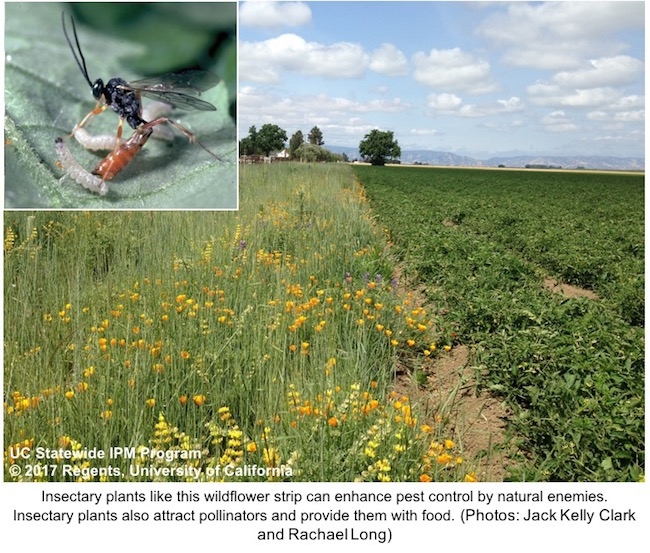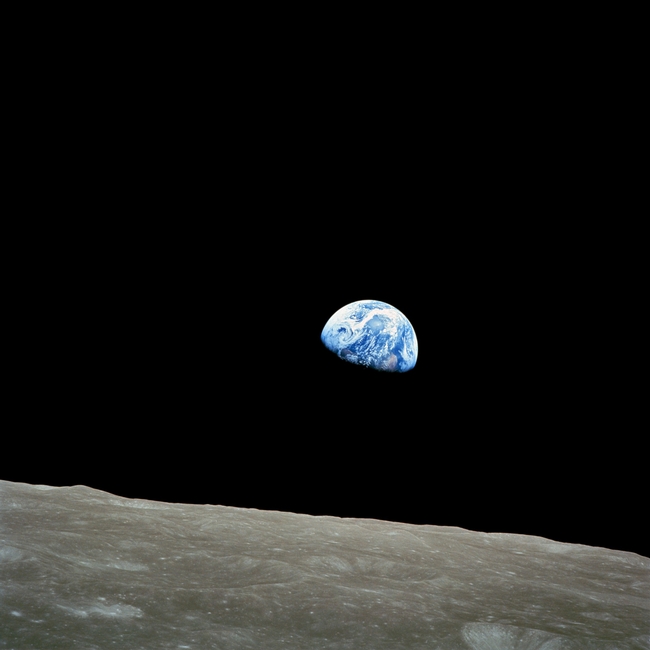
Posts Tagged: Earth Day
UC Climate Steward: ‘It’s the most fulfilling work’
Climate Stewards course instructor inspires change in Butte County
Growing up in Butte County, Rose Brazil-Few has watched climate change devastate communities and ecosystems in the form of severe drought and deadly wildfire, including the 2018 Camp Fire that swept through Paradise. Through the University of California Climate Stewards program, Brazil-Few is taking action in her home county – and inspiring others to help.
“Seeing the environmental situation firsthand in California, every day I find a reason to work on climate action projects,” she explained. “It's the most fulfilling work that I could possibly be doing right now.”
As a California Climate Action Corps Fellow (a workforce development program affiliated with California Volunteers), Brazil-Few is working at the Butte Environmental Council as community sustainability coordinator. She said the UC Climate Stewards course she completed last fall – administered by the UC California Naturalist program – taught her crucial lessons she applies every day, especially on framing and conveying the climate crisis.
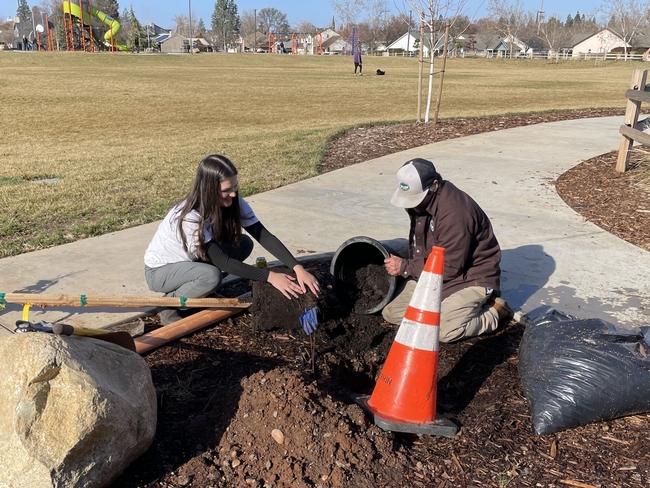
“One of the biggest takeaways is how to communicate about climate change while we're doing climate action work,” she said. “Sometimes you encounter community members who don't necessarily like the term ‘climate change,' but they still believe in cleaning up parks and planting trees for shade – so focusing on positive action will still accomplish your bigger goals.”
Brazil-Few will further amplify those locally rooted solutions and climate stewardship opportunities when she starts teaching her own UC Climate Stewards course this summer, through Butte Environmental Council.
“Rose is the first CCAC fellow to become a certified Climate Stewards course instructor as part of the Pathway to Leadership we co-developed with CCAC,” said Sarah-Mae Nelson, UC Climate Stewards academic coordinator. “This pathway is an opportunity for fellows to continue fostering community and ecosystem resilience in their communities as active Climate Stewards, once their official fellowship has ended.”
Since launching in fall 2020, nearly 500 people have completed the UC Climate Stewards course, which is delivered by 17 partner organizations throughout the state. Nelson noted that, in addition to the CCAC collaboration, UC Climate Stewards is also working with Sustainability Service Corps and SEI (Strategic Energy Innovations) Climate Corps – and looking into bringing the course to other states.
A 2021 graduate of Humboldt State University with a bachelor's degree in environmental studies, Brazil-Few said she appreciates that the UC Climate Stewards course instills a sense of hope and empowerment and possibility.
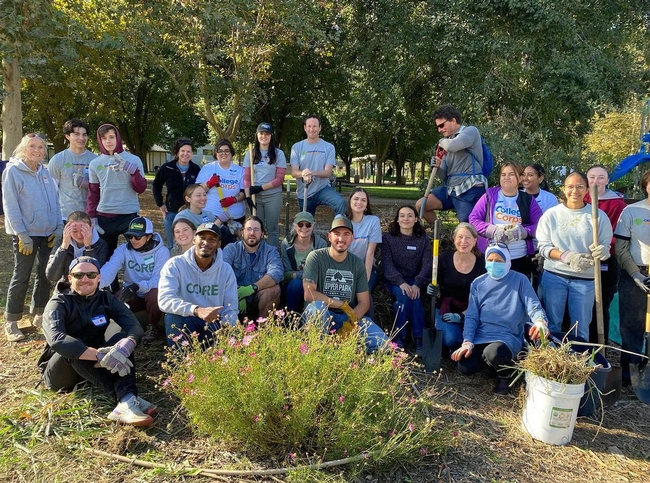
“I know some people who feel hopeless because there's such a focus on the doom of climate change – when in reality you can find so many programs and people in your local community making positive change,” she said.
In her community, Brazil-Few highlights the partnership efforts between the Butte County Local Food Network and area growers, the Traditional Ecological Knowledge sharing at Verbena Fields in Chico, and the continued growth of the community composting program – among many other projects.
They all illustrate a key point that Brazil-Few will emphasize as she designs her UC Climate Stewards course: a meaningful climate project need not take place at a large scale – action can happen, literally, in one's own backyard.
“It can be easily attainable and accessible,” she said. “And just talking about it with people and getting your community excited is the very first step in creating a series of events that eventually leads to a bigger impact on climate change and positive environmentalism.”
A Touch of Red on Earth Day
It's Earth Day, an event we celebrate every April 22 to demonstrate support for environmental protections on our troubled planet. This year's theme: "Restore Our Earth." U.S. Sen. Gaylord Nelson launched Earth Day on April 22, 1970, with the idea of holding a nationwide...
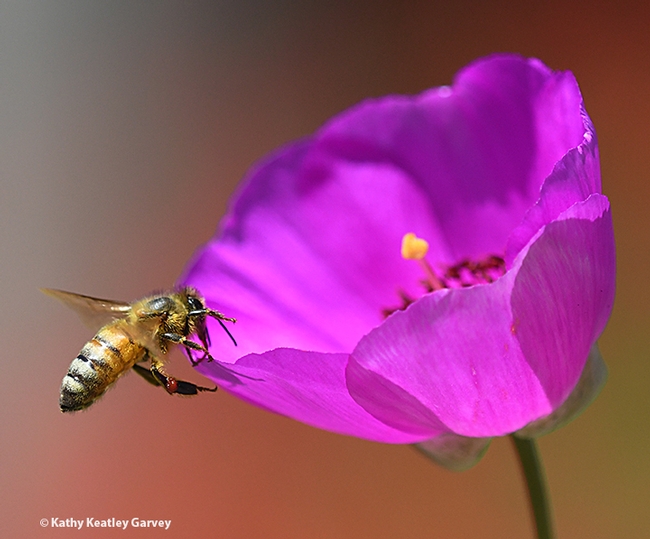
A honey bee touches down on a rock purslane, Calandrinia grandiflora. This plant yield red pollen. (Photo by Kathy Keatley Garvey)
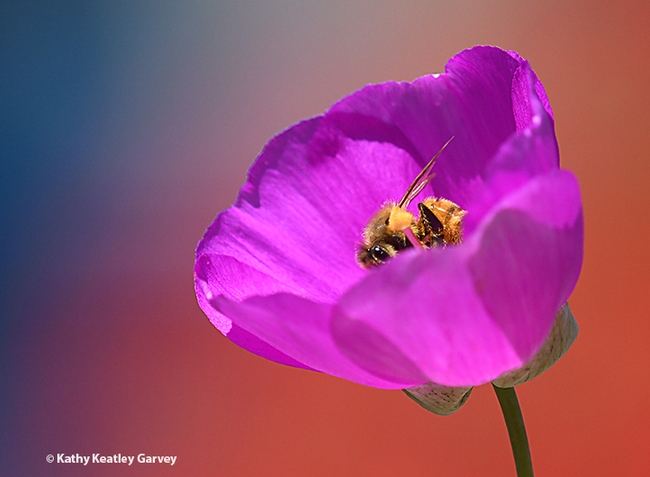
A honey bee rolling around in rock purslane on Earth Day. (Photo by Kathy Keatley)
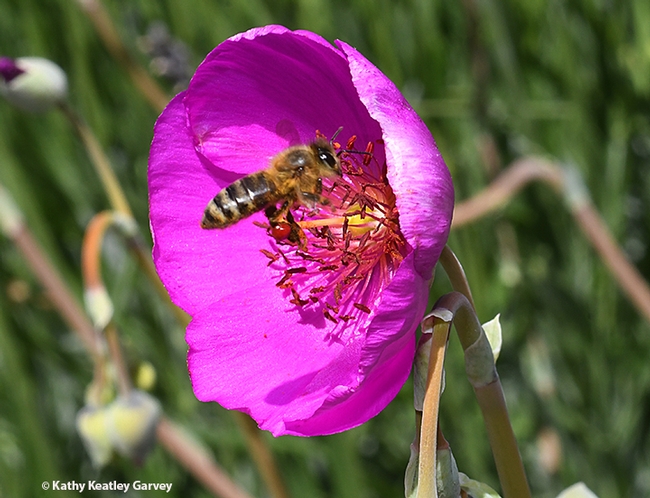
A honey bee packing red pollen from the rock purslane. (Photo by Kathy Keatley Garvey)
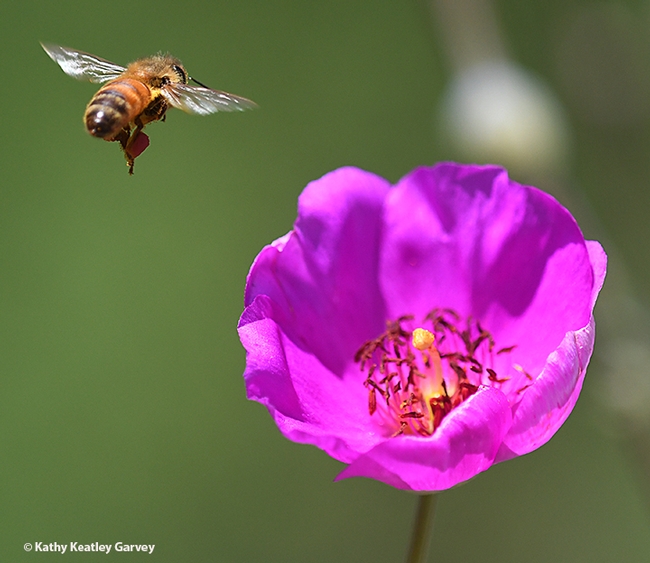
A honey bee leaving a rock purslane and heading off to another one. (Photo by Kathy Keatley Garvey)
Tree lovers invited to free webinars to learn proper tree-care
While spring may not be the best time to plant shade trees, many people are inspired to plant trees as part of Earth Day and Arbor Day celebrations. Millions of trees are planted every year in America and many of them perish after planting, according to James Downer, University of California Cooperative Extension horticulture and plant pathology advisor.
“Tree planting campaigns, while well intentioned, may not consider all the realities of bringing young trees into landscapes and caring for them over decades,” Downer said. “Increasingly, city budgets for tree care are being cut back and planting budgets are non-existent in many cities. Tree planting is left to volunteer groups, homeowners, schools and other organizations that may want trees in their communities.”
Planting is just the first step in trees' lives and can also be the reason for their demise if they are not planted correctly. Trees that survive initially may perish later in their young lives due to poor maintenance or exotic pests or from drought.
To teach members of the public how to select and care for trees, Downer will host a series of free webinars. The five one-hour sessions will cover tree selection, where and how to plant a tree, how to prune trees, how to feed and water them, and pest management. Downer, who is based in Ventura County, welcomes all tree enthusiasts.
When: Thursdays beginning April 22, 2021
Time: 12:30 – 1:30 p.m.
Registration and details at https://ucanr.edu/survey/survey.cfm?surveynumber=33331.
Schedule:
April 22: Selection of Trees (benefits of trees)
April 29: Planting Trees
May 6: Pruning Trees
May 13: Caring for Trees (mulch, water, fertilizer)
May 20: Managing tree pests and diseases
“Establishing trees starts with tree selection—planting the right tree in the right place,” Downer said. “As trees grow and begin to fill their space in gardens, landscapes, parks or city streets they begin to require other kinds of care.”
Downer, who holds a Ph.D. in plant pathology from UC Riverside, has 35 years of experience in horticulture and plant pathology. His research focuses on diseases of shade trees and other landscape plants and cultural practices to maintain landscape plants, especially trees. He also studies the use of mulch, soil microbiology and disease suppression in mulched soils.
Home is where the habitat is: This Earth Day, consider installing insectary plants
Help the environment on Earth Day, which falls on April 22, by growing insectary plants. These plants attract natural enemies such as lady beetles, lacewings, and parasitic wasps. Natural enemies provide biological pest control and can reduce the need for insecticides. Visit the new UC IPM Insectary Plants webpage to learn how to use these plants to your advantage.
The buzz about insectary plants
Biological control, or the use of natural enemies to reduce pests, is an important component of integrated pest management. Fields and orchards may miss out on this control if they do not offer sufficient habitat for natural enemies to thrive. Insectary plants (or insectaries) can change that — they feed and shelter these important insects and make the environment more favorable to them. For instance, sweet alyssum planted near lettuce fields encourages syrphid flies to lay their eggs on crops. More syrphid eggs means more syrphid larvae eating aphids, and perhaps a reduced need for insecticides. Similarly, planting cover crops like buckwheat within vineyards can attract predatory insects, spiders, and parasitic wasps, ultimately keeping leafhoppers and thrips under control.
Flowering insectaries also provide food for bees and other pollinators. There are both greater numbers and more kinds of native bees in fields with an insectary consisting of a row of native shrubs planted along the field edge (called a hedgerow). Native bees also stay in fields with these shrubs longer than they do in fields without them. Therefore, not only do insectaries attract natural enemies, but they can also boost crop pollination and help keep bees healthy.
Insectary plants may attract more pests to your plants, but the benefit is greater than the risk
The possibility of creating more pest problems has been a concern when it comes to installing insectaries. Current research shows that mature hedgerows, in particular, bring more benefits than risks. Hedgerows attract far more natural enemies than insect pests. And despite the fact that birds, rabbits, and mice find refuge in hedgerows, the presence of hedgerows neither increases animal pest problems in the field, nor crop contamination by animal-vectored pathogens. Hedgerow insectaries both benefit wildlife and help to control pests.
How can I install insectary plants?
Visit the Insectary Plants webpage to learn how to establish and manage insectary plants, and determine which types of insectaries may suit your needs and situation. If you need financial assistance to establish insectaries on your farm, consider applying for Conservation Action Plan funds from the Environmental Quality Incentives Program (EQIP) offered by the Natural Resources Conservation Service.
Sources:
- Flower flies (Syrphidae) and other biological control agents for aphids in vegetable crops. (PDF)
- Good news for hedgerows: no effects on food safety in the field.
- Hedgerow benefits align with food production and sustainability goals.
- Habitat restoration promotes pollinator persistence and colonization in intensively managed agriculture. (PDF)
- Reducing the abundance of leafhoppers and thrips in a northern California organic vineyard through maintenance of full season floral diversity with summer cover crops.
Earth Day history can inspire us all
My father was ahead of his time.
Years before Americans were asked to, Jim Hayden ensured that our family conserved energy by keeping the thermostat low, turning off lights and taking "military" showers to reduce water use. My father also observed the speed limit. Our family vacations took us to national parks. I grew up with a keen appreciation for the outdoors. I remember the sense of horror and helplessness when I saw the images of distressed wildlife in the aftermath of the Santa Barbara oil spill, which devastated the beaches that were an important part of our family's life.
In part as a result of that oil spill, Earth Day came into being. And 49 years after that inaugural Earth Day event, many of us will find ourselves at a gathering dedicated to increasing awareness of the environment that supports and sustains us all.
History of Earth Day
Earth Day was launched in 1970. Many factors contributed to the call for a national day focusing on environmental stewardship, including the publication of Rachel Carson's Silent Spring - serialized in the New Yorker - and the catastrophic oil spill that occurred off the coast of Santa Barbara in 1969. The Santa Barbara oil spill galvanized U.S. Senator Gaylord Nelson (D-Wisconsin) to call for a national day of locally inspired and organized "teach-ins" on the environment - a national "Earth Day." The Earth Day model was inspired by the spirit of campus activism at the nation's colleges and universities. It wasn't top-down, but rather a grassroots effort that encouraged communities to develop educational and service events around issues and topics important to them.
Earth Day struck a chord; some estimates suggest that 1 in 10 Americans participated in the first events. Earth Day is widely credited with "sparking" the modern environmental movement. Landmark environmental legislation swiftly followed (including the Clean Air Act, Clean Water Act and Endangered Species Act). The Environmental Protection agency was founded that same year. Twenty years after its launch, Earth Day became a global movement.
You can learn more from the Earth Day Network by linking to this website.
Take part. Learn. Act.
UC ANR research efforts support a healthy and sustainable environment
UC ANR is dedicated to supporting a healthy and sustainable environment. It's part of our core mission. Highlighted below are just a few of the many projects we're working on to protect California's natural resources, build climate-resilient communities and ecosystems, and promote healthy people and communities.
Seeking Street Trees that Can Cope With Climate Change
Trees play a vital role in shading and beautifying California's urban areas. UC ANR researcher Janet Hartin says that:
“Urban areas create heat islands, with dark asphalt surfaces reradiating heat. Cities can be 10 to 20 degrees warmer than the surrounding environment."
Trees provide other benefits, including improving soil health and stability, providing habitat for wildlife and serving as a source of beauty. But climate change (resulting in reduced rainfall and higher temperatures) can create chronic stress in some street tree species.
To find a solution, UC Cooperative Extension scientists are partnering with the U.S. Forest Service "in an unprecedented 20-year research study to expand the palette of drought-adapted, climate-ready trees for several of the state's climate zones."
“The idea is to look at available but under-planted, drought-tolerant, structurally sound, pest resistant trees for Southern California that do well in even warmer climates,” said Janet Hartin, UCCE horticulture advisor in San Bernardino County.
Learn more - including what tree species might be planted in your area - in this terrific read by Jeannette Warnert.
CDFA and UC ANR join forces to advance Climate-Smart Ag
A new partnership between the California Department of Food and Agriculture (CDFA) and UCANR aims to advance climate-smart ag in California. More than $1 million has been used to hire 10 UC Cooperative Extension community education specialists, who are being deployed to 10 counties to help farmers participate in CDFA programs that increase the adopting of "smart" farming and ranching practices.
The primary focus is putting into action on-farm solutions to improve (and increase) smart farming practices that reduce greenhouse gas emissions. Practices that improve soil health, nutrient management, irrigation management, and more will be emphasized.
Learn more about this innovative program here.
Be kind to the Earth by reducing food waste
Nearly 40 percent of the food produced in the U.S. is wasted and much of that waste ends up in landfills (definitely not good for our environment or the economy). The National Resources Defense Council estimates that the average family of four throws out nearly 1,000 pounds of food each year, wasting roughly $1,500. Consumers as a group waste more food than farms, grocery stores or restaurants. For tips on ways you can reduce #FoodWaste, click here. Related Reading: What a World War I Poster Can Teach Us About #FoodWaste.
4-H Sustainable You! summer camp to be offered in Ventura County
The UCCE Ventura County team will once again be hosting its week-long 4-H Sustainable You! summer day camp at UC's Hansen Agricultural Research and Extension Center (HAREC) in Santa Paula. Campers aged 9-12 are invited to spend time on a working farm, learning what it means to be sustainable through fun activities based around the five major themes: Air, Land, Energy, Water, and Food. Registration information can be found here.
For more than 100 years the UC ANR 4-H Youth Development Program has taught generations of California children about food, agriculture, leadership, and community service using learn-by-doing practices. The California 4-H Science, Engineering and Technology (STEM) Initiative seeks to increase science literacy and help address the growing need for scientists, engineers, and technical experts. 4-H empowers youth with the skills to lead for a lifetime.
Interested in learning more about 4-H in your community? Visit our statewide 4-H program page.
The above photo is one of my favorites. It was taken by Apollo 8 astronaut Bill Anders on Dec. 24, 1968, while in orbit around the moon. It shows the Earth rising for the third time above the lunar horizon. It always serves to remind me that my individual actions do matter, and when considered with the actions of others, contribute to real change ... the "moon shot." Have a great Earth Day!

